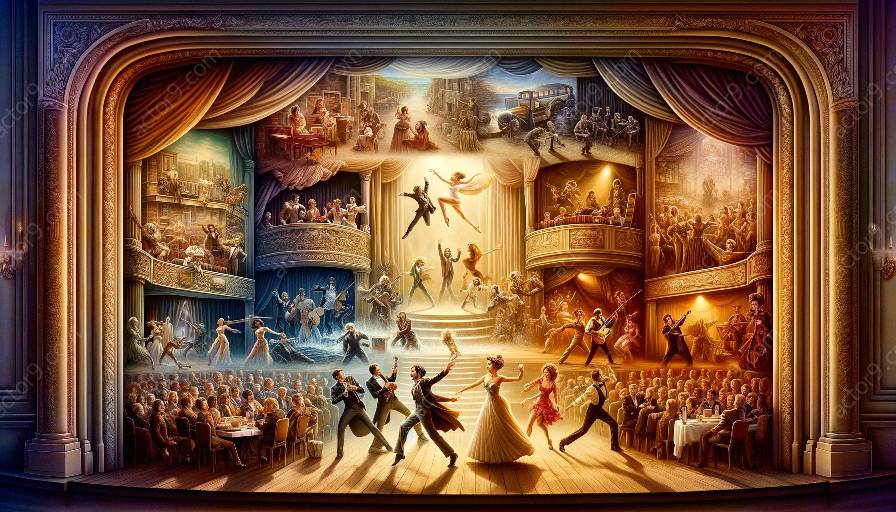Musical theatre has a captivating and multifaceted history that has evolved over centuries, blending elements of music, dance, and drama to create a unique form of entertainment that continues to enchant audiences worldwide.
Early Origins
The origins of musical theatre can be traced back to ancient Greek drama, where music and dance were integrated into theatrical performances. However, it was not until the Renaissance period that the modern foundations of musical theatre began to take shape.
Renaissance Era
During the Renaissance, lavish court spectacles and intermezzi laid the groundwork for musical theatre, with elaborate costumes, sets, and musical accompaniment becoming essential components of the performances.
The Golden Age of Musical Theatre
The 19th and early 20th centuries marked the golden age of musical theatre, with iconic shows like “The Pirates of Penzance,” “The Mikado,” and “Show Boat” captivating audiences with their melodious tunes, intricate choreography, and compelling narratives.
Evolution of Styles and Genres
As musical theatre continued to evolve, various styles and genres emerged, each contributing to the rich tapestry of this art form. From operettas and revues to rock operas and jukebox musicals, musical theatre has continually reinvented itself to reflect the changing tastes and cultural landscape.
Operettas and Revues
Operettas gained popularity in the late 19th and early 20th centuries, characterized by their light-hearted, comedic themes and enchanting melodies. Revues, on the other hand, showcased a series of loosely connected acts, often featuring vaudeville-style entertainment.
Rock Operas and Concept Musicals
The 1960s and 1970s witnessed the rise of rock operas such as “Jesus Christ Superstar” and “The Who's Tommy,” which integrated rock music with theatrical storytelling. Concurrently, concept musicals like “Company” and “Cabaret” emerged, focusing on thematic coherence and innovative storytelling techniques.
Contemporary Landscape
Today, musical theatre continues to thrive, embracing diverse influences and experimenting with new forms of expression. From groundbreaking productions like “Hamilton” that infuse hip-hop with traditional musical theatre elements to immersive experiences offered by interactive shows, the genre remains dynamic and ever-evolving.
Conclusion
The history of musical theatre is a rich tapestry woven with cultural influences, artistic innovations, and compelling storytelling. As the art form continues to evolve, it promises to captivate audiences for generations to come, showcasing the enduring power of music, dance, and drama in a spellbinding fusion that is truly unique to musical theatre.




































